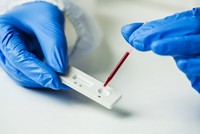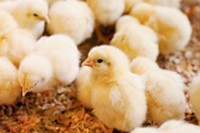Advertisement
Grab your lab coat. Let's get started
Welcome!
Welcome!
Create an account below to get 6 C&EN articles per month, receive newsletters and more - all free.
It seems this is your first time logging in online. Please enter the following information to continue.
As an ACS member you automatically get access to this site. All we need is few more details to create your reading experience.
Not you? Sign in with a different account.
Not you? Sign in with a different account.
ERROR 1
ERROR 1
ERROR 2
ERROR 2
ERROR 2
ERROR 2
ERROR 2
Password and Confirm password must match.
If you have an ACS member number, please enter it here so we can link this account to your membership. (optional)
ERROR 2
ACS values your privacy. By submitting your information, you are gaining access to C&EN and subscribing to our weekly newsletter. We use the information you provide to make your reading experience better, and we will never sell your data to third party members.
Policy
Automated Blood-Spot Screening
February 28, 2011
| A version of this story appeared in
Volume 89, Issue 9
A colleague loaned me her copy of the Jan. 17 issue of C&EN to share the article “Technology Renews a Basic Approach” by Celia Henry Arnaud (page 13). Having focused largely on testing dried blood spots from newborns for over 40 years, I found the article, and the “rediscovery” of dried blood spots by the research/pharmaceutical community, very interesting.
However, I was surprised by a couple of comments regarding a lack of automation. The investigators should reach out to the newborn screening community (for example, the National Newborn Screening & Genetics Resource Center: genes-r-us.uthscsa.edu) where automation is the bread and butter of our existence. For example, automated punching equipment has been a mainstay in newborn screening laboratories since the mid-1970s. With more than 4 million babies screened each year—many of them twice—for 25 or more congenital conditions, the 40 or so newborn screening laboratories in the U.S. rely heavily on automated processing of the dried blood specimens.
Michael Glass
Director, Newborn Screening
Washington State Department of Health
Olympia




Join the conversation
Contact the reporter
Submit a Letter to the Editor for publication
Engage with us on Twitter